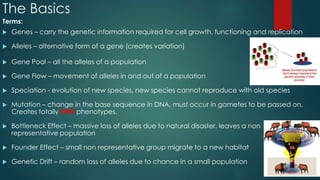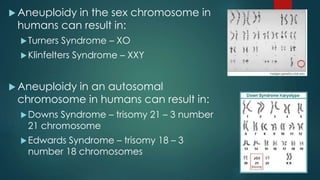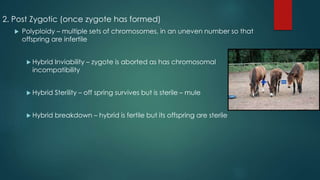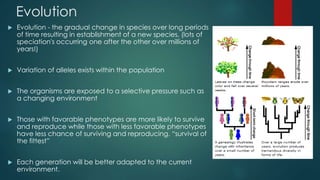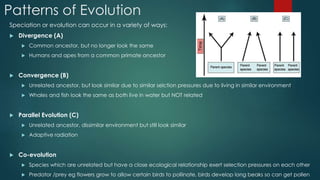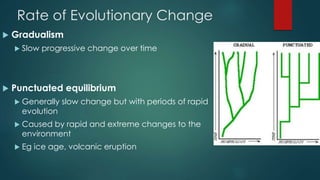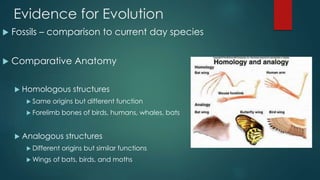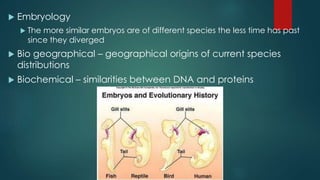This document provides information on various concepts related to evolution and speciation. It defines key terms, describes mechanisms of natural selection and speciation, and outlines different patterns of evolution such as divergence and convergence. Examples of evidence for evolution are also mentioned, including fossils, comparative anatomy, embryology, biogeography, and molecular biology studies.


